Development of Circulation Mechanism and Mode of Ecological Products and Its Enlightenment to Ecological Industry of Rocky Desertification Control
DOI: 10.23977/erej.2023.070507 | Downloads: 22 | Views: 1128
Author(s)
Liang Li 1, Xiaofang Huang 2
Affiliation(s)
1 School of Management Science, Guizhou University of Finance and Economics, Guiyang, 550025, China
2 International School of Hotel and Tourism Management, Lyceum of the Philippines University, Manila, 430072, Philippines
Corresponding Author
Liang LiABSTRACT
With the policy support, technological innovation and financial guarantee of rocky desertification control from the ninth five year plan to the thirteenth five year plan, the ecological industry and ecological products of rocky desertification control came into being, and the ecological industry of rocky desertification control is moving towards industrialization. Through the statistical analysis of 225 relevant literatures at home and abroad, the results show that: (1) the number of published literatures in the time series is as follows: the number of published literatures in 2001 and before moved forward in a wavy manner, and then rose in a ladder shape after 2006, indicating that the research has gradually become a hot academic topic. (2) The research content is mainly theoretical research. Based on the karst ecological environment and regional resource endowment, the feasibility of controlling rocky desertification through the development of ecological industry is discussed. (3) Domestic literatures are mainly distributed in Southwest China and Jiangsu and Zhejiang provinces, which shows that there is obvious coupling between ecological industry, ecological products and ecological environment conservation, and areas with advanced ecological concepts. It also reveals the frontier theory of the research on the ecological industry market model of rocky desertification control in karst areas from five aspects: theoretical research, technology research and development, model construction, experimental demonstration, monitoring and evaluation. Finally, it is found that the current research on rocky desertification control has been relatively mature, forming a unique system of theoretical research, technology research and development, technology demonstration, monitoring and evaluation, but the research on the circulation mode of ecological derivative industry products is relatively weak. Therefore, it is of great significance to study the current situation and problems of the circulation of ecological products, especially Rosa roxburghii Tratt products, clarify the direction of the reform of the circulation mechanism, and build a new mode of Rosa roxburghii Tratt products circulation in karst rocky desertification areas, so as to promote the development of local economy and the development of ecological derivative industries of rocky desertification management.
KEYWORDS
Ecological products; Circulation mechanism; Circulation mode; Research progress; Ecological products for rocky desertification controlCITE THIS PAPER
Liang Li, Xiaofang Huang, Development of Circulation Mechanism and Mode of Ecological Products and Its Enlightenment to Ecological Industry of Rocky Desertification Control. Environment, Resource and Ecology Journal (2023) Vol. 7: 58-68. DOI: http://dx.doi.org/10.23977/erej.2023.070507.
REFERENCES
[1] Zheng Peng. A Study on the Circulation Model of Agricultural Products from the Perspective of Farmers [D]. Huazhong Agricultural University, 2012.
[2] Huang Shuai. Research on the Circulation Efficiency of Agricultural Products in the Suburbs of Beijing [D]. Capital University of Economics and Trade, 2019. DOI: 10.27338/d.cnki.gsjmu. 2019.000712.
[3] Chen Huijuan. Research on Vegetable Circulation Models in Jiangsu Province [D]. Nanjing Agricultural University, 2012.
[4] Alderson Wroe. Marketing Behavior and Executive Action [M]. Homewood, Ill: Irwin., 1957.
[5] Wang Zhigang. Selection of Trading Methods in Agricultural Wholesale Markets: Theory and Practice [M]. Beijing: China Agricultural Science and Technology Press, 2001.
[6] Zhang Changhou. Exploration of the Operating Mechanism of the Modern Circulation System of Agricultural Products [J]. Commercial Economy, 2022 (06): 103-106. DOI: 10.19905/j.cnki. syjjj1982. 2022.06.015.
[7] Zhu Ziping. Research on Agricultural Product Logistics in the Process of Agricultural Industrialization in China [D]. Tianjin University, 2009.
[8] Ouden M. et al. Vertical cooperation in agricultural production-marketing chains, with special reference to product differentiation in pork [J]. Agribusiness, 1996, 12 (3):277-290.
[9] Collins J L. New Directions in Commodity Chain Analysis of Global Development Processes[J].Research in rural sociology and development, 2005, 11:3-17. DOI:10.1016/S1057-1922(05)11001-4.
[10] Hobbs J E. Measuring the Importance of Transaction Costs in Cattle Marketing[J]. American Journal of Agricultural Economics, 1997, 79(4): 1083-1095.
[11] Zhu Ziping, He Jinsheng. The Current Situation and Urgent Problems of Agricultural Product Logistics Development in China [J]. Journal of Tianjin University of Finance and Economics in Modern Finance and Economics, 2009, 29 (02): 27-30. DOI: 10.19559/j.cnki.12-1387. 2009.02.006.
[12] Narasimhan R, Talluri S. Perspectives on risk management in supply chains[J]. Journal of Operations Management, 2009, 27(2):114-118. DOI:10.1016/j.jom. 2009.02.001.
[13] Bingen J, Serrano A, Howard J. Linking farmers to markets: different approaches to human capital development [J]. Food Policy, 2003, 28(4):405-419.DOI:10.1016/j.foodpol. 2003.08.007.
[14] Andreas G, Batt P J, Victor A S, et al. Linking smallholder vegetable producers to markets - A comparison of a vegetable producer group and a contract-farming arrangement in the Lushoto District of Tanzania[J]. Journal of Rural Studies, 2018, 63:S0743016717307404-. DOI:10.1016/j.jrurstud. 2018.07.011.
[15] Kumari M, Singh R R, Kumar R. Issues and approaches for linking small vegetables growers to markets in Bihar: A policy brief [J]. AkiNik Publications, 2020. DOI:10.22271/PHYTO. 2020.V9.I4SG.12155.
[16] Tu Chuanqing. Analysis of Factors Influencing the Intervention of Farmers in High Value Added Activities in the Circulation of Agricultural Products: An Empirical Study Based on Fruit Farmers in Gannan [J]. Business Economics and Management, 2014 (05): 12-23. DOI: 10.14134/j.cnki.cn33-1336/f. 2014.05.003.
[17] Kou Rong, Tan Xiangyong. Analysis Framework for the Efficiency of Agricultural Product Circulation [J]. China Circulation Economy, 2008 (05): 12-15.
[18] Pang Yingjuan. Vigorously promoting the circulation of agricultural products in Jingyuan County and increasing farmers' income [J]. Modern Economic Information, 2013 (19): 462.
[19] Ju Hong. Analysis Report on the Current Situation of Agricultural Product Circulation in Henan Province [J]. Logistics Engineering and Management, 2012, 34 (01): 35-37.
[20] Wang Yuan. Reconstruction and Efficiency Analysis of Agricultural Product Circulation Models from the Perspective of the Whole Industry Chain [J]. Business Economics Research, 2020 (03): 142-144.
[21] Wang Na, Zhang Lei. Evaluation and Improvement Measures for the Efficiency of Agricultural Product Circulation: An Analysis Framework Based on the Perspective of the Circulation Industry Chain [J]. Rural Economy, 2016 (04): 109-114.
[22] Liu Tianjun, Cai Qihua. Analysis of Production Technology Efficiency of Farmers with Different Business Scales: Based on Data from 210 Farmers in Kiwi Production Base County, Shaanxi Province [J]. China Rural Economy, 2013 (03): 37-46.
[23] Chang Jian. Empirical Study on the Circulation System of Agricultural Products in Beijing Suburbs [D]. Chinese Academy of Agricultural Sciences, 2009.
[24] Zhu Xining. Innovation of Agricultural Product Circulation Models in China under the Background of Internet Economy [J]. Business Economics Research, 2019 (04): 120-122.
[25] Muzellec L, Ronteau S, Lambkin M. Two-sided Internet platforms: A business model lifecycle perspective[J]. Industrial Marketing Management, 2015, 45: 139-150.
[26] Fan Ping. Analysis of the Development Model of Agricultural Product Logistics in Guangdong Province Based on Supply Chain [J]. Logistics Engineering and Management, 2013, 35 (06): 121-122.
[27] Wang Xiaofang. Exploring the Innovation of Agricultural Product Circulation Models in China [D]. Sichuan Normal University, 2012.
[28] Gong Xianglin. Building a New Vegetable Circulation System through E-commerce [J]. China Circulation Economy, 2010, 24 (05): 57-60. DOI: 10.14089/j. cnki. cn11-3664/f. 2010.05.021.
[29] Meng Lei. Discussion on the Construction and Operation Mechanism of China's Urban Rural Bilateral Commercial Circulation System [J]. China Circulation Economy, 2013, 27 (06): 18-21. DOI: 10.14089/j.cnki.cn11-3664/f. 2013. 06. 023.
[30] Li Hongwei. Analysis of the Economic Effects of the Agricultural Product CSA Circulation System - Based on the Supply Short Chain Perspective [J]. Business Economics Research, 2019 (09): 135-138.
[31] Rong, Akkerman, Grunow. An optimization approach for managing fresh food quality throughout the supply chain[J]. International Journal of Production Economics, 2011, 131(1): 421-429.
[32] Yang Wenjie. Comparative Study on the Circulation Models of Online and Physical Retail Commerce [J]. Business Economics Research, 2020 (06): 13-16.
[33] Dijkman R M, Dumas M, Van Dongen B F, et al. Business models for the Inter-net of Things [J]. International Journal of Information Management, 2015, 35(6): 672-678.
[34] Qin Longfei. Comparison of Private Brand Operation Methods between E-commerce Retail Enterprises and Traditional Department Store Enterprises [J]. Business Economics Research, 2017 (09): 131-133.
[35] Wang Baoyi. The Essence, Causes, and Practical Trends of "New Retail" [J]. China's Circulation Economy, 2017, 31 (07): 3-11. DOI: 10.14089/j.cnki.cn11-3664/f. 2017.07.001.
[36] Wang Liang, Chen Xue. The Circulation Efficiency and Improvement Path of Hericium erinaceus Processing Products under Cross border E-commerce [J]. China Edible Fungi, 2020, 39 (06): 59-63. DOI: 10.13629/j.cnki.53-1054. 2020. 06.016.
[37] Wang Xiaodong. Innovation of Bulk Commodity Circulation Models in E-commerce [J]. Business Economics Research, 2019 (18): 88-90.
| Downloads: | 5799 |
|---|---|
| Visits: | 414074 |
Sponsors, Associates, and Links
-
International Journal of Geological Resources and Geological Engineering
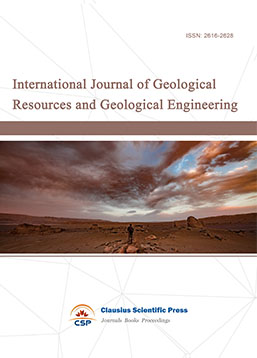
-
Big Geospatial Data and Data Science

-
Solid Earth and Space Physics

-
Environment and Climate Protection
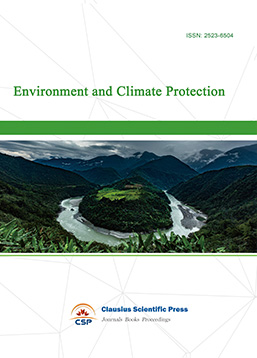
-
Journal of Cartography and Geographic Information Systems

-
Offshore and Polar Engineering

-
Physical and Human Geography
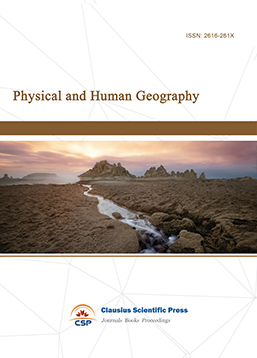
-
Journal of Atmospheric Physics and Atmospheric Environment
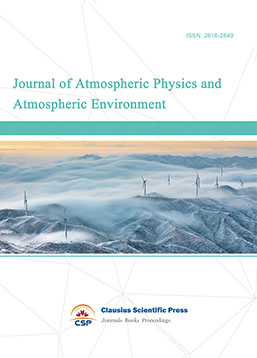
-
Trends in Meteorology

-
Journal of Coastal Engineering Research
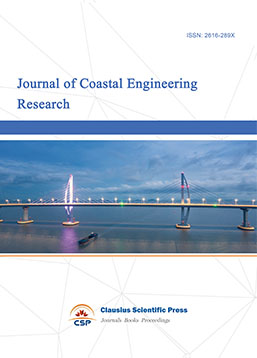
-
Focus on Plant Protection
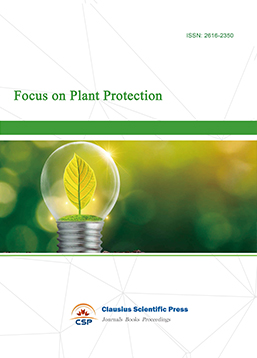
-
Toxicology and Health of Environment
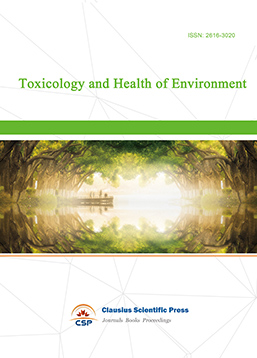
-
Geoscience and Remote Sensing
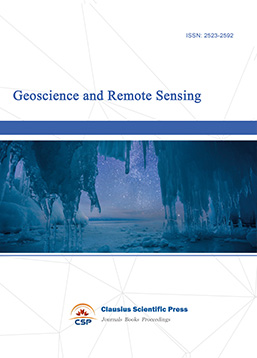
-
Advances in Physical Oceanography

-
Biology, Chemistry, and Geology in Marine
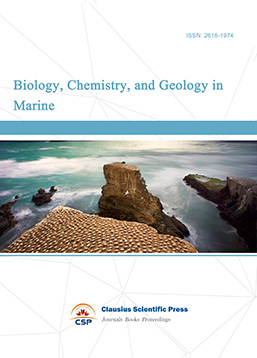
-
Water-Soil, Biological Environment and Energy

-
Geodesy and Geophysics

-
Journal of Structural and Quaternary Geology
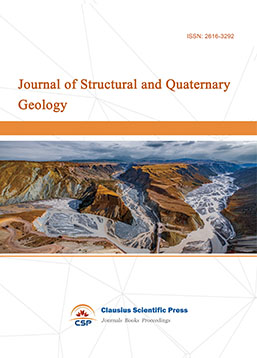
-
Journal of Sedimentary Geology

-
International Journal of Polar Social Research and Review


 Download as PDF
Download as PDF